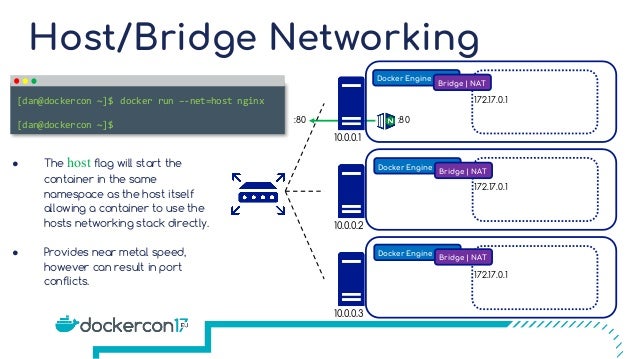

The docker container port command shows us in a nice format which ports are forwarding traffic from the host to the container. Publishing ports is in the format of HOST:CONTAINER. The flag in bold -p 80:80, specifes to map TCP port 80 in the container to port 80 on the host. In the following example, an Nginx container is started with the name of webhost. This option flag is short for –publish, which creates a firewall rule which maps a port on the container to a port on the host machine to the outside world. The first thing we’ll look at when networking with Docker is the -p option. You can attach containers to any number of networks, or none if you don’t need any.You can create networks as needed, or use the host IP (–net=host).The defaults work well in most cases but can be customized if needed.All containers on the same virtual network can talk to each other with no need for exposing ports (-p).Each virtual network routes through the NAT on the host IP.Each container is connected to a private virtual network named bridge.Some of the defaults when working with Docker Networks are as follows.

Most times, the bridge default virtual network is used but we’ll see how to create, connect to, and disconnect from additional networks as needed. Most of the networking in Docker revolves around the ports in use and how to expose those ports for various services in containers. In other words, the defaults provided are common to work with but you can change any of the default options with regard to networks under the hood. In fact, in using Docker to this point, we haven’t had the need to tinker with any network settings as typically the network portion of Docker “Just Works”. Docker makes it fairly easy to set up virtual networking in a local environment.


 0 kommentar(er)
0 kommentar(er)
